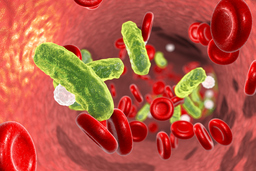Synthetic High Density Lipoprotein for Treatment of Infections Complications
TECHNOLOGY NUMBER: 2020-434

OVERVIEW
Infusion of a synthetic high density lipoprotein increased survival from sepsis- Treatment helped to control inflammation and platelet aggregation In vitro and in vivo
- Improved sepsis survival from 30% to 90% in a mouse model
BACKGROUND
The goal of the normal host response to infection is to localize and control bacterial invasion. Sepsis results when that response to infection becomes generalized and creates processes that negatively impact healthy tissues, resulting in severe morbidity or even death. While the early signs and symptoms of sepsis may include fevers, confusion, shortness of breath, or increased heart rate, the condition may progress to include loss of consciousness or multi-system organ failure.
The current approach to patients with sepsis is supportive care including antibiotics and attempts to prop up heart and lung function as needed, though no definitive treatment for sepsis has been developed. For some time, researchers have observed significant decreases in high density lipoproteins (HDLs) during sepsis but have been unable to translate these results into a therapy. The decreased HDL levels appear to be related solely to the circumstance of sepsis rather than occurring in any other trauma patients. A need exists for a means by which to exploit this response to develop therapies that help address sepsis.
INNOVATION
Researchers have discovered that the infusion of a synthetic HDL (sHDL) in a mouse model of sepsis improved survival. The infusions were noted to control inflammation and platelet aggregation in vitro and in vivo, minimizing the effects normally associated with the septic state. The investigators were able to identify the most effective sHDL, named 22A-DMPC, among a range of options. This agent significantly reduced expression of pro-inflammatory mediators, as was confirmed by that absence of inflammatory infiltrates in biopsies of the liver and lung. Mice that were treated with 22A-DMPC had improvements in their survival from 30% to 90%. Given the high prevalence of sepsis coupled with the lack of an FDA-approved therapeutic, the current technology would be of significant interest to companies developing sepsis or inflammatory therapeutics. Previous clinical attempts employing sHDLs to treat atherosclerosis further underlie the market demand for this product and potentially, a second market that would benefit from this technology.